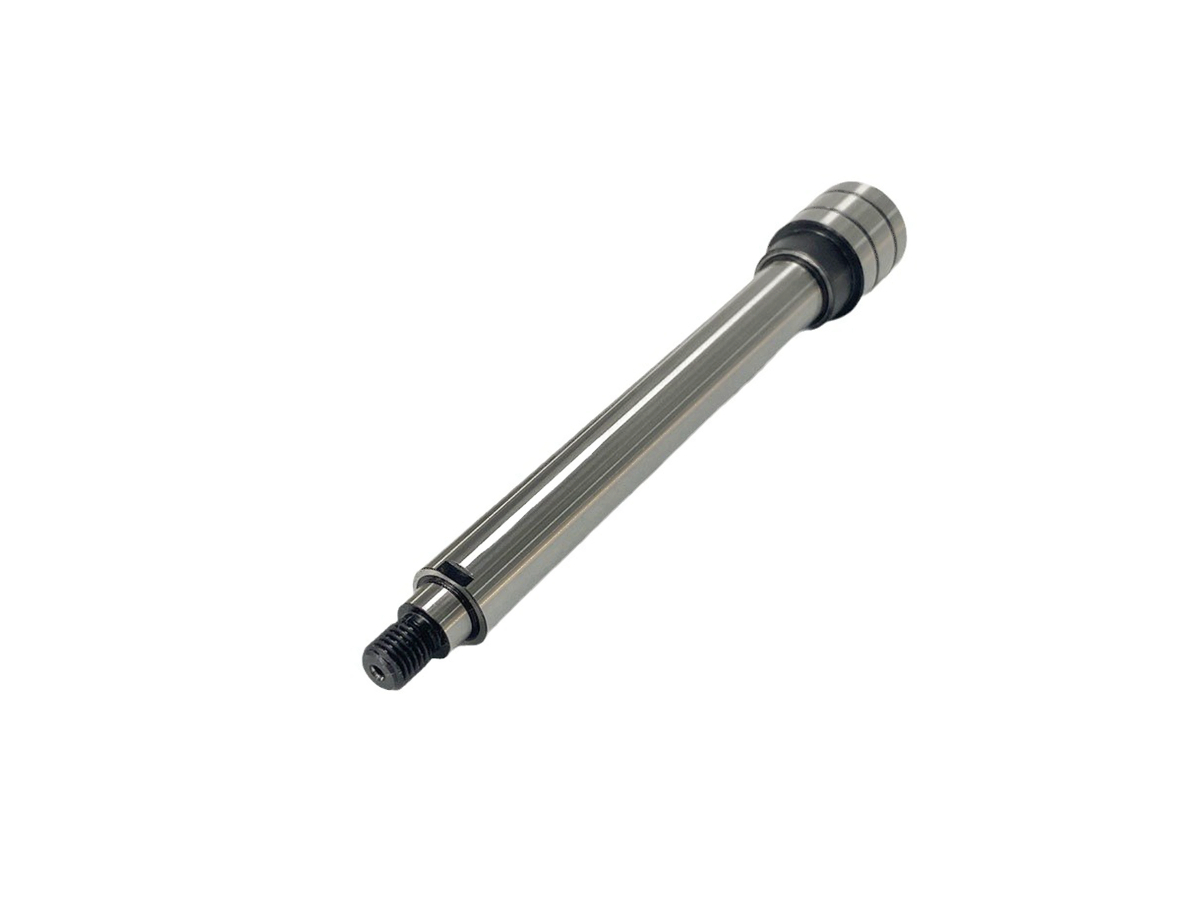CNC Grinding in Power Generation: Case Study on Ceramic Parts for Turbine Efficiency
Precision Grinding for High-Temperature Energy Systems
Modern power generation turbines demand components capable of operating at 1,500°C+ while maintaining micron-level dimensional stability. CNC grinding services enable ceramic turbine blades and seals with ±0.001mm tolerances, which is critical for achieving 45%+ thermal efficiency in advanced combined-cycle plants. Due to their ultra-high temperature resilience, technical ceramics like silicon nitride (Si₃N₄) and zirconia (ZrO₂) now constitute 30% of next-gen turbine components.
The transition to hydrogen-capable turbines has accelerated the adoption of multi-axis CNC grinding for complex ceramic geometries. From SiC-coated ZrO₂ combustion liners to Al₂O₃-SiC hybrid bearings, precision grinding ensures surface finishes below Ra 0.1μm, meeting ASME PTC 55 performance benchmarks for power generation.
Material Selection: Ceramic Solutions for Extreme Conditions
Material | Key Metrics | Turbine Applications | Limitations |
|---|---|---|---|
900 MPa flexural strength, 3.2 W/m·K thermal conductivity | Rotor blades, nozzle guide vanes | Requires diamond grinding wheels due to hardness | |
1,200 MPa compressive strength, 10.5×10⁻⁶/°C CTE | Combustion chamber liners | Phase transformation risks above 1,200°C | |
400 MPa flexural strength, 99.5% purity | Insulating bushings, sensor housings | Brittle fracture below 0.1mm wall thickness | |
450 MPa tensile strength, 170 W/m·K thermal conductivity | Heat exchanger plates | High grinding tool wear rates |
Material Selection Protocol
High-Stress Rotating Components
Rationale: Si₃N₄ provides fracture toughness (6.5 MPa√m) for 20,000 RPM turbine blades. Post-grinding laser surface texturing reduces airflow separation by 15%.
Thermal Barrier Substrates
Logic: Yttria-stabilized ZrO₂ with thermal spray coatings withstands 1,400°C gas temperatures while maintaining 0.02mm dimensional stability.
Corrosion-Prone Areas
Strategy: Reaction-bonded SiC offers 99% resistance to flue gas sulfidation when ground to Ra 0.2μm.
CNC Grinding Process Optimization
Process | Technical Specifications | Turbine Applications | Advantages |
|---|---|---|---|
0.001mm flatness, Ra 0.05μm | Seal ring mating surfaces | Achieves helium-leak rates <1×10⁻⁶ mbar·L/s | |
0.002mm roundness, 0.5μm diameter tol. | Bearing journals | Enforces <0.1μm radial runout | |
5mm depth of cut, 1m/min feed rate | Turbine blade root profiles | Reduces cycle time by 60% vs conventional | |
0.005mm slot width, Ra 0.3μm | Cooling channel machining | Processes >100 GPa hardness ceramics |
Process Strategy for Si₃N₄ Turbine Blades
Rough Grinding: 400-grit diamond wheels remove 80% of material at 30 m/sec.
Stress Relief: 1,200°C annealing in argon atmosphere (per ASTM C1161).
Finish Grinding: 3,000-grit resin-bonded wheels achieve Ra 0.08μm.
Surface Enhancement: CVD SiC coating (50μm) applied for erosion resistance.
Surface Engineering: Enhancing Ceramic Performance
Treatment | Technical Parameters | Power Generation Benefits | Standards |
|---|---|---|---|
300μm YSZ, 1,400°C capability | Reduces substrate temp by 300°C | ASTM C633 | |
0.2mm depth, Al₂O₃-ZrO₂ composite | Improves thermal shock resistance | ISO 14923 | |
5μm CrAlN, adhesion >80 MPa | Prevents hot corrosion | VDI 3198 | |
0.05mm removal, Ra 0.1μm | Creates micro-cooling channels | ASME B46.1 |
Coating Selection Logic
Combustion Zones
Solution: EB-PVD YSZ coatings achieve 1,000 thermal cycles at 1,400°C with <5% TGO growth.
Steam Turbine Components
Method: Plasma-sprayed Cr₂O₃ reduces wet steam erosion by 70% on Al₂O₃ seals.
Quality Control: Power Industry Validation
Stage | Critical Parameters | Methodology | Equipment | Standards |
|---|---|---|---|---|
Density Measurement | ≥99% theoretical density | Archimedes' principle | Mettler Toledo XS205 | ASTM B962 |
Surface Integrity | 0.1μm Ra, no microcracks >5μm | White light interferometry | Bruker ContourGT-K | ISO 25178 |
Thermal Cycling | 1,000 cycles (RT to 1,200°C) | Induction heating system | Cressall RES1000 | ASTM C1525 |
Fracture Toughness | ≥5 MPa√m | SEVNB method | Instron 8862 | ISO 15732 |
Certifications:
ASME Section III for nuclear-grade ceramic components.
ISO 9001:2015 with Cpk >1.67 for critical dimensions.
Industry Applications
Gas Turbine Blades: Si₃N₄ with CVD SiC coating (50k operating hours).
Hydrogen Combustors: ZrO₂ liners + HiPIMS CrAlN (1,500°C capability).
Steam Turbine Seals: Al₂O₃-SiC composites ground to 0.02mm flatness.
Conclusion
Advanced ceramic CNC grinding services enable 15-25% efficiency gains in next-gen power turbines while meeting API 616 vibration standards. Integrated one-stop manufacturing reduces lead times by 30% for ISO-certified components.
FAQ
Why choose silicon nitride over superalloys in turbines?
How does HiPIMS coating improve corrosion resistance?
What standards apply to ceramic turbine components?
Can CNC grinding achieve <0.1μm surface finishes?
How to validate ceramic part thermal shock resistance?

